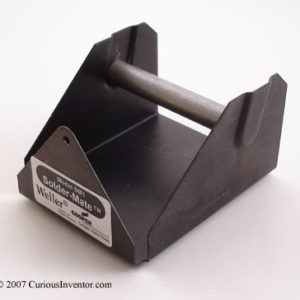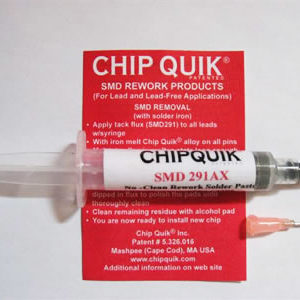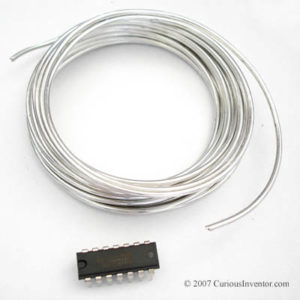Description
For a 7 min. how-to video with close-up, slow motion shots of proper technique, go here. The video and following guide also explain the importance of flux, how much wattage is needed, tip shape, and just how bad the fumes are. This is rosin-cored wire solder, with a “66” core of 44 flux–this means it’s 3.3% by weight flux. It can also be purchased in smaller percentages, and while in general it’s best to use the least amount of flux possible, for hobby and non-critical applications, ease of soldering is more important (see below for corrosion risk). This flux is classified as ROM1, which means Rosin based, medium activity, and halides added. 60/40 vs. 63/37 vs. silver bearing solder: 60/40 means 60% tin and 40% lead by weight. This explains the difference between the different types in detail. 63/37 is eutectic, has a slightly lower melting point, and “freezes” a bit faster. In mass production style wave soldering, this is worth the increase in cost, but not for hand soldering. Silver bearing solder has a bit of silver that many claim is better for surface mount soldering, stronger joints, and higher audio fidelity. Silver was originally added to keep solder from leeching silver off connections, not any of the above reasons. Stiffer silver joints may actually make joints less reliable because the stiffness stresses small component leads more when the board changes temperature. Amount: How far will an ounce go? In a rough experiment, we generously soldered 16, 16-pin chips, tinning the tip in between each one. Based on that usage, 1 oz would complete over 3000 joints. To our knowledge, CuriousInventor.com is the only place to purchase Kester solder in quantities less than a lb. The data sheet can be found here. Why buy this over RadioShack solder? First, the prices are comparable. Second, Kester is the Rolls-Royce of solder, and has decades of industrial use attesting to the quality of the solder and the flux contained in the wire. Now, we grew up using RadioShack solder for hundreds of projects, so we certainly aren’t going to claim it doesn’t work. However, like many things in RadioShack, the specs are unknown–just how active is the flux and how likely is it that the residues will corrode a circuit board? The quality of solder is mostly based on its flux, and whether or not there are any air gaps in the wire. Kester’s manufacturing process is supposedly superior to others when it comes to avoiding gaps in small diameter wire. Kester 44 flux strikes a difficult balance between a very active flux (one that cleans oxides effectively and helps the solder to wick quickly, even on difficult surfaces like nickel), and one that won’t corrode the board later. No-clean solder / flux: For non-critical applications, we recommend “standard” rosin flux that has been activated, but this recommendation only goes out to Kester brand 44 and 48 fluxes. Activated rosin flux makes soldering easier and faster, especially on oxidized or other difficult surfaces. And, the risk that the residues will cause corrosion is debatable at best. If you’re building a project that will operate in humid, salty ocean air, consider cleaning the flux or using a no-clean type. But otherwise, it may not even be necessary to clean. From the Kester 44 spec sheet: “Kester 44 possesses excellent fluxing ability, the flux residue is non-corrosive and non-conductive under normal conditions of use. When exposed to an elevated temperature and humidity environment (38���C, 94% RH) for 72 hours, there is no evidence of corrosion caused by the flux residue. Throughout its many years of wide usage, 44 Rosin Flux has produced many billions of soldered connections. In all these billions of solder joints, involving the most delicate and critical of electrical and electronic components, there has never been an authentic instance of corrosion by the flux residue under normal conditions.”





Reviews
There are no reviews yet.